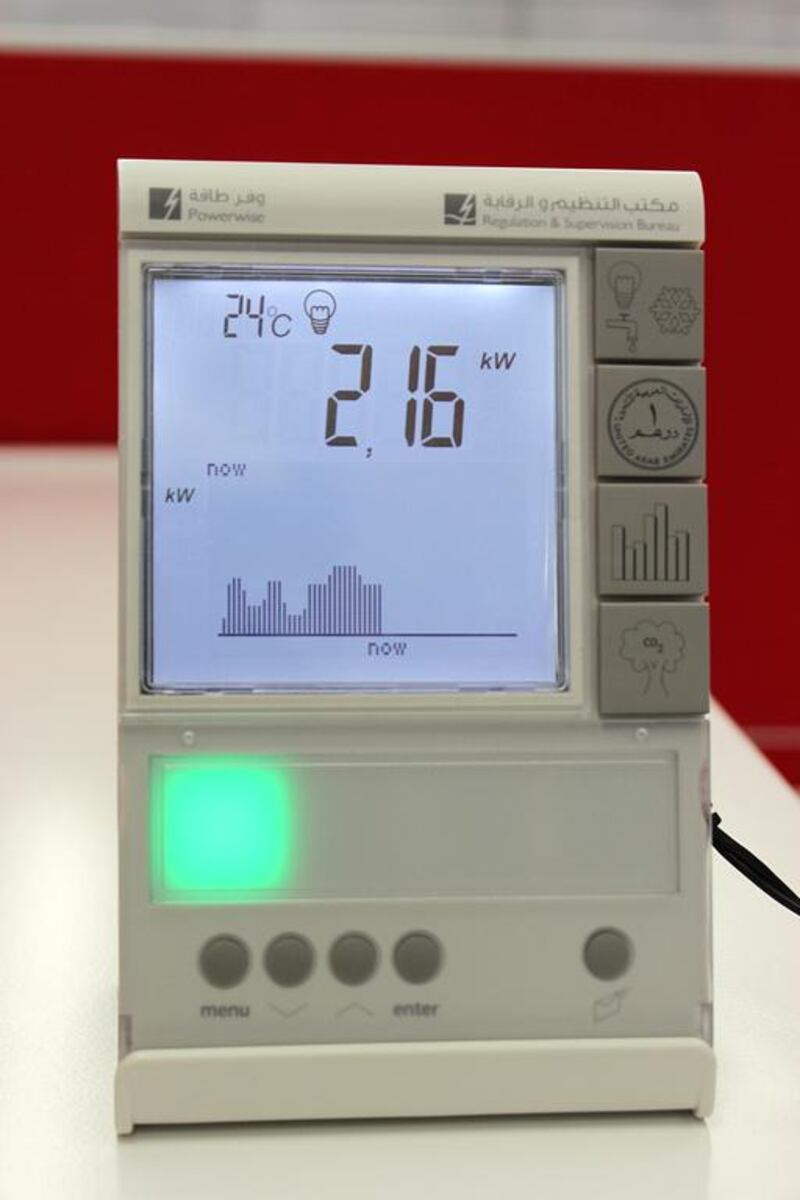ABU DHABI // Devices featuring a traffic-light system that could save more than Dh1 billion of energy a year are to be installed in all properties across the city.
The Government said that the devices – which it will install free-of-charge – will reveal to householders how much energy they are using.
It is hoped that there will be a finalised design for the devices over the next 12 months, after which they will be installed on all new-build homes. Attention will then be turned to older homes.
The decision follows a trial by the Regulation & Supervision Bureau in 400 villas in the capital which was aimed at encouraging people to shift their electricity use outside of the daily peak hours of noon to 6pm.
In each villa the bureau installed a device featuring green, amber and red lights. When households were running efficiently – at a peak load of four kilowatts or less – the display unit would show a green light. When households were running inefficiently – with a peak load of more than eight kilowatts – the display would show a red light. Those in between would see an amber light.
The experiment was designed to see if consumers could be motivated to change what time of day they used the majority of their electricity. Higher rates were charged at times of high demand and lower rates at times of lower demand.
While the differential rates motivated 65 per cent to make some changes to their schedule, the changes were too slight to be significant, according to Nick Carter, the bureau’s director general.
However, researchers noticed that households had been using between 25 and 50 per cent less electricity.
“Virtually every customer saved,” said Mr Carter.
The bureau put the change down to the traffic light units, which “generated a huge amount of interest”, according to Mr Carter.
During the trial the units featured not only the traffic lights, but a whole raft of features giving people a wide range of technical information about their electricity consumption.
However, the bureau believes it was the simplicity of the traffic lights that helped to change people’s behaviour.
Mr Carter said the key to their effectiveness was their simplicity.
“We had all this data on here – the cost per unit, the rate during the peak, the rate outside the peak,” said Mr Carter, holding one of the devices in his hand. “But people did not care about that.”
The trial took place in January this year and the results from the 400 villas were compared with a control group of 200 homes. The control group showed no changes in behaviour.
“Their consumption was no different to the previous year,” said Mr Carter. “So we have had some very good behavioural change that this device has generated and the key was not the data on the display at all.
“The key was the colour system – the red, the amber and the green. That is the only thing that most people looked at.”
The bureau now plans to implement the system across the city, though it first needs to create simpler versions of the devices.
“Our view is that all villas should have these installed,” he said. “They won’t necessarily be like the ones used in the trial because now we are looking at simply a colour-driven system.”
Mr Carter said that if the devices were installed in 70,000 villas, savings could reach 130 kilowatt hours of electricity per second.
“It is over Dh1 billion of generation that we do not need to spend a year,” he said, adding that this would reduce energy subsidies paid by the Government without raising the cost to consumers.
vtodorova@thenational.ae





